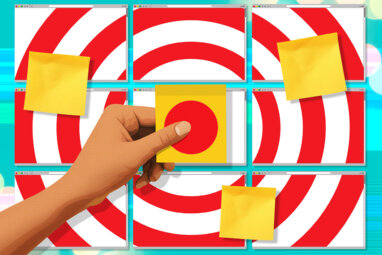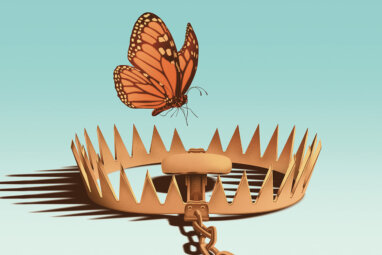1. M. Fitzgerald, N. Kruschwitz, D. Bonnet, and M. Welch, “Embracing Digital Technology: A New Strategic Imperative,” 2013 Digital Transformation Global Executive Study and Research Project, MIT Sloan Management Review, Oct. 7, 2013.
2. B. Groysberg, “The Seven Skills You Need to Thrive in the C-Suite,” Harvard Business Review, March 18, 2014.
3. M. Weiser, “The Computer for the 21st Century,” Scientific American, September 1991.
4. V. Grover and A.H. Segars, “Information Technology: The Next 1100102 Years,” The Database for Advances in Information Systems 27, no. 4 (1996): 45-57.
5. M. Noer, “One Man, One Computer, 10 Million Students: How Khan Academy Is Reinventing Education,” Forbes, Nov. 2, 2012.
6. H. Ishil and B. Ullmer, “Tangible Bits: Towards Seamless Interfaces Between People, Bits, and Atoms,” MIT Media Laboratory, Proceedings of CHI ’97, Association for Computing Machinery, March 1997.
7. G. Gustafsson, Y. Cao, et al., “Flexible Light-Emitting Diodes Made from Soluble Conducting Polymers,” Nature 357, no. 6378 (June 11, 1992): 477-479.
8. A. LaFrance, “The Promise of a New Internet,” The Atlantic, June 10, 2014.
9. T. Simonite, “Build Your Own Internet with Mobile Mesh Networking,” MIT Technology Review, July 9, 2013, www.technologyreview.com.
10. K. Finley, “The Ingenious Plan to Turn Toyota Land Cruisers into an Outback Wireless Network,” Wired, May 11, 2016.
11. E. Hellweg, “Technology Responds to Hurricane Katrina,” MIT Technology Review, Sept. 2, 2005.
12. R. Jurdak, A. Nafaa, and A. Barbirato, “Large Scale Environmental Monitoring Through Integration of Sensor and Mesh Networks,” Sensors 8, no. 11 (Nov. 24, 2008): 7493-7517.
13. D. Piperno, A. Ranere, et al., “Starch Grain and Phytolith Evidence for Early Ninth Millennium B.P. Maize from the Central Balsas River Valley, Mexico,” Proceedings of the National Academy of Sciences 106, no. 13 (March 2009): 5019-5024. doi: 10.1073/pnas.0812525106.
14. Le Cong, F. Ann Ran, et al., “Multiplex Genome Engineering Using CRISPR/Cas Systems,” Science 339, no. 6121 (Feb. 15, 2013): 819-823.
15. D. Moren, “7 Surprising Biometric Identification Methods,” Popular Science, Dec. 30, 2014.
16. J. McGregor, “Some Swedish Workers Are Getting Microchips Implanted in Their Hands,” The Washington Post, April 4, 2017.
17. B. Herzogenrath (ed.), “From Virgin Land to Disney World: Nature and Its Discontents in the USA of Yesterday and Today,” Critical Studies 15, 2001.
18. D. Dobbs, “Why There’s New Hope About Ending Blindness,” National Geographic, September 2016.
19. J. Cohen, “Memory Implants,” MIT Technology Review, April 23, 2013.
20. J. Domingo and J. Bordonaba, “A Literature Review on the Safety Assessment of Genetically Modified Plants,” Environment International 37 (2011): 734-742.
21. J. Kilbane, “Future Applications of Biotechnology to the Energy Industry,” Frontiers in Microbiology, Feb. 4, 2016.
22. J.R. Tumbleston, D. Shirvanyants, et al., “Continuous Liquid Interface Production of 3D Objects,” Science 347, no. 6228 (March 20, 2015): 1349-1352.
23. H. Kang, S.J. Lee, et al., “A 3D Bioprinting System to Produce Human-Scale Tissue Constructs with Structural Integrity,” Nature Biotechnology 34 (2016): 312-319.
24. H. Shieh and R. Jennings, “Three-Dimensional Printing of External Airway Splints for Tracheomalacia,” Journal of Thoracic Disease 9, no. 3 (2017): 414-416.
25. L. Parker, “3D-Printed Reefs Offer Hope in Coral Bleaching Crisis,” National Geographic, March 13, 2017.
26. B. Marr, “The Rise of Thinking Machines: How IBM’s Watson Takes on the World,” Forbes, Jan. 6, 2016.
27. L. Lorenzetti, “IBM's Watson Makes Its Health Care Debut on the Apple Watch,” Fortune, Oct. 26, 2015.
28. T. Claburn, “IBM: AI Should Stand for Augmented Intelligence,” InformationWeek, Aug. 4, 2016.
29. F. Vatansever and M.R. Hamblin, “Far Infrared Radiation (FIR): Its Biological Effects and Medical Applications,” Photonics & Lasers in Medicine, Nov. 1, 2012. 10.1515/plm-2012-0034.
30. S.M. Douglas, I. Bachelet, and G.M. Church, “A Logic-Gated Nanorobot for Targeted Transport of Molecular Payloads,” Science 335, no. 6070 (Feb. 17, 2012): 831-834. 10.1126/science.1214081.
31. J. Hagerty, “Meet the New Generation of Robots for Manufacturing,” The Wall Street Journal, June 2, 2015.
32. S. Gaudin, “Meet Nadine, a Life-Like Robot with a Personality of Her Own,” Computerworld, Jan. 8, 2016.
33. E. Singer, “The Slow Rise of the Robot Surgeon,” MIT Technology Review, March 24, 2010.
34. A. Hadhazy, “Will Space-Based Solar Power Finally See the Light of Day?” Scientific American, April 16, 2009.
35. “Blockchains: The Great Chain of Being Sure About Things,” The Economist, Oct. 31, 2015.





Comments (2)
Dramas Download
orlando dicembre